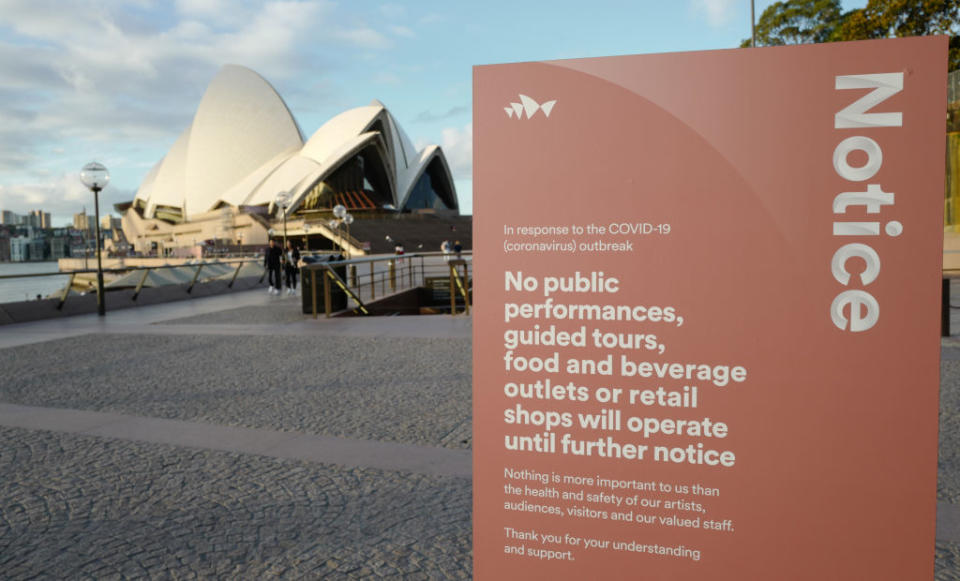Will Covid-19 be the shortest recession in history?

The coronavirus pandemic has created one of the worst recessions the world has seen since the 1930’s Great Depression – but it is also shaping up to be one of the shortest.
According to research from Commonwealth Bank’s international economics team, the global economy is already showing signs of bouncing back, following a “very deep [contraction] but very quick at only a few months”.
“The months-long lockdown in the first half of 2020 means most economies will contract in 2020. But economic growth will likely be strong in the second half of 2020 in the absence of widespread lockdowns,” said CBA head of international economics Joseph Capurso in a note.
However, the pace of recovery is expected to be short-lived, with unemployment and underemployment rates set to take years to return to pre-coronavirus levels.
Also read: A deeper, more sinister recession, is now on the cards
Also read: $90 billion needed to save Australia’s economy: report
Also read: What Australia’s jobs market will look like after Covid-19
In response to the coronavirus-triggered financial crisis, central banks like the Reserve Bank and the US Federal Reserve tightened by cutting interest rates and buying more assets, which helped finance businesses and free up cash flow.
“The quick effort of central banks shortened the financial crisis to only a few months. But the scars of a deep, albeit brief, recession will last years.”
Principal Global Investors’ executive director and chief global economist Robert Baur also said that the US economy may be expanding again off the back of a “record-short recession”.
The world’s worst recession in 90 years began in March this year, but it is also the “shortest in history, ending in April or May, after only two or three months,” he said.
“A recovery from the worst global recession in decades is possibly underway.”
China, the epicenter of Covid-19, was also the first to emerge from lockdown, and government data has revealed economic improvement in March.
The Eurozone is also showing signs of life after a “devastating” collapse in March and April, while Japan – which had a weak economy before the Covid-19 crisis hit – is recovering, though it will be “gradual and protracted”.
“A few countries–India and Latin America in particular–are still struggling with a late arrival of the virus. But...we see recovery in much of the rest of the world.”
BetaShares chief economist David Bassanese warned that while a recession could be short, a ‘double dip’ was possible.
“The definition of recession focused on the “rate of change” which may well now be positive after a huge slump over April and May… but the level of activity may remain well below pre-virus levels for sometime.. so it could still “feel” like a recession for a while,” he told Yahoo Finance.
“Is it worse to lose one million jobs a month for 20 months, or lose 20 million in the first month and the recover one million jobs over the next 20 months? The latter is a shorter recession, but still large loss of employment for a long time.
“On the upside, the deeper the recession, the stronger the likely bounce... At least initially. It is easier to get an initial ‘V-shaped’ recovery after a very steep decline.”
The Great Depression began after a Wall Street crash in late 1929 and rapidly spread across the world. It took Australia about a decade to recover.
What does this mean for Australia?
According to Bell Direct market analyst Jessica Amir, the virus pandemic has brought with it a “short, sharp and steep” economic downturn to Australia – but a snapback is expected.
“The Australian economy is likely to fall 4.4 per cent year on year in this calendar year before returning to growth of 3.6 per cent,” she said.
“There are signs that the harder hit parts of the economy are starting to rebound – state governments except Victoria have begun easing business and interstate border restrictions,” she said.
Retail sales are up thanks to increased demand in online shopping. Meanwhile, business conditions are also recovering, Amir added.
“The ABS household survey showed most Aussies are willing to splash the cash, with extra subsidies (two $750 bonuses to low income households, pensioners and students slightly helping). In the jobs market, wages growth is returning to areas like accommodation, food services, education and arts & recreation and transportation.”
According to Capurso, China’s recovery strategy of increasing infrastructure spending will directly benefit the Australian economy.
“The mere mention of higher infrastructure investment supported the iron ore price. An increase in commodity prices is like a pay raise for the Australian economy,” he said.
The low cash rate will also assist Australia’s economic recovery, with the low interest rate to help Aussies pay for mortgages, business loans and overdrafts.
However, Australia will need to contend with the loss of tourism and education exports due to the border closures, as well as the impact that reduced immigration will have.
CBA predicts Australia’s GDP will contract by 3.8 per cent in 2020, then see growth of 2.4 per cent in 2021.
Make your money work with Yahoo Finance’s daily newsletter. Sign up here and stay on top of the latest money, property and economy news.
Follow Yahoo Finance Australia on Facebook, Twitter, Instagram and LinkedIn.

 Yahoo Finance
Yahoo Finance 
